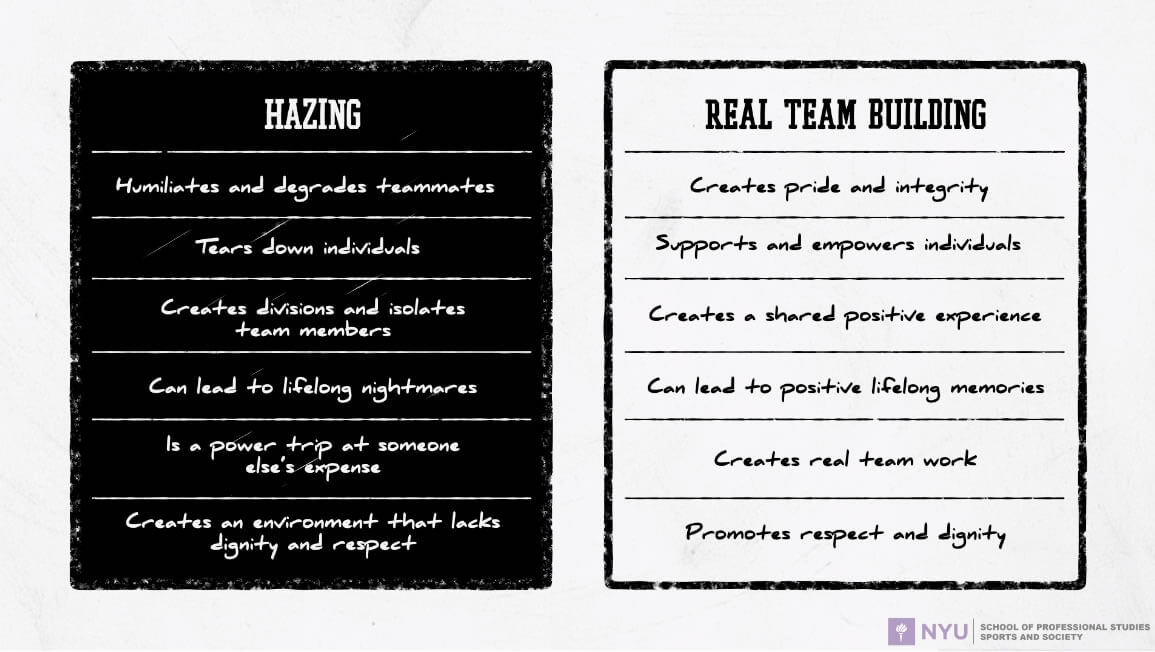Bullying and Hazing

We recognize that a positive and respectful learning environment will not guarantee a successful season for any sports team. But we strongly believe that a negative and disrespectful learning environment will almost always guarantee a team’s underachievement and lack of success.
Coaches who understand this reality and the importance of having a positive and respectful team culture, must be prepared to recognize and manage two of the most common forms of negative behaviors associated with sports teams, bullying and hazing.
#1 it’s Deliberate: A bully’s intention is to physically and/or emotionally hurt someone else.
#2 it’s Repetitive: A bully will repeatedly target the same victim again and again.
#3 It relies on an imbalance of power and status: Bullies choose victims they perceive as vulnerable or lacking status. Younger athletes are particularly vulnerable to being bullied by older team members.
Bullying is not just one thing. It occurs in many different forms with varying levels of severity.
IT CAN BE PHYSICAL – Poking, pushing, hitting,
IT CAN BE VERBAL– Yelling, taunting, name-calling, Insulting, threatening to hurt someone
IT CAN BE ANTI-SOCIAL – Excluding team members from team activities.
And it can be cyber-bullying: Using the internet or cell phones to send hurtful messages, spread gossip or share embarrassing images. This type of bullying is more intense because it can be unrelenting.
Regardless of what form bullying takes, it involves three groups of people. The bully, the victim and the bystander.
The majority of your team members will be bystanders. With your guidance, they can stop bullying when they see it by helping the victim, getting the support of other team members – or seeking adult help when needed.
Hazing can look a lot like bullying, but unlike bullying, hazing is not repetitive. It generally involves the use of humiliation and embarrassment to initiate new team members and it relies on the active or passive participation by new team members.
Typically, hazing peaks just before the start of the regular season, but it can return just prior to playoffs if younger players are brought up to the varsity.
Unfortunately, many players and coaches mistakenly think that hazing will build a sense of team. In reality, hazing undermines the very essence of team. Don’t confuse hazing with real team-building.
Here are three important tips for managing hazing and bullying
Finally, no team is immune to some form of negative team behavior, but coaches do have the power and responsibility to shape a team culture that reduces the likelihood of it occurring.
How you treat your players – the words and language you use to motivate them – the personal conduct that you display and demand of them vs what you choose to ignore or tolerate, will eventually become the standard that your team members use when interacting with each other.